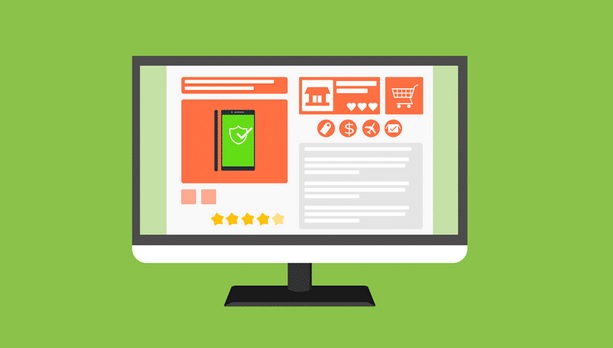Did you hear that soft clicking sound just now? Listen closely, because that’s the sound of another customer navigating away from your Woocommerce store because of slow loading speeds. And can you blame them? Life moves quickly, and nobody has the time to wait for a slow website to load.
If you suspect slow load speeds are driving customers from your online store, you’ll want to address the problem immediately. Here are five fixes you can try. Hurry, there’s that infernal clicking sound again.

USE APPROPRIATE, HIGH-QUALITY WEB HOSTING
There is no shortage of companies that provide web hosting, and most offer a variety of options so that you can choose one that best suits your needs. Be sure to choose a reputable company that offers the fastest web hosting for WordPress.
When first opening a Woocommerce store, many people elect to save money by using inexpensive, shared web-hosting. That’s fine, but you’ll want to keep an eye on your site’s traffic, as a significant increase will use more bandwidth.
Once traffic reaches a certain level you’ll likely have to upgrade to a web-hosting service with plans that offer more dedicated bandwidth. Always make sure you have the appropriate bandwidth so your customers won’t have to wait for product pages to load.
MANAGE THE SIZE OF YOUR STORE
Managing the size of your store can help improve load speed. How large the file-sizes are on any given product page affects performance speed. HTML, Javascript, CSS, and especially image files can take up large amounts of space, slowing load speed.
Regularly testing, and keeping a record of your store’s performance is always a good idea. This way any slowing of your load speeds will be of short duration. Also, it will be easier to identify the cause, should your load speeds begin to slow.
There are a number of free online services that can help you determine the size and load speed of your Woocommerce store. Many of these also help to identify what might be slowing your load speeds.
A WORD ON IMAGES
Images account for fifty percent of your website’s load speed. In fact, images make up more than fifty percent of all web content. As every image requires another HTML request, this can significantly slow the speed of your store.
There are plug-ins available for your Woocommerce store that compress and optimize your image files, sometimes resulting in as much as seventy percent reduction in size. Use these plug-ins to help alleviate any lag in your site’s load speed.
Make sure also that you have Woocommerce’s “Lazyload” setting enabled. This feature only loads images that the customer can see as he/she scrolls, as opposed to all the images on any given page. This can save space and increase loading speed.
CONSIDER A CONTENT DELIVERY NETWORK
If you anticipate your store will attract customers from foreign countries, or if you find that a significant percentage of your Woocommerce store’s traffic is from customers in other countries, you may want to consider a content delivery network.
When your Woocommerce store is viewed by someone at a significant geographical distance there is a chance their experience with your site may not be optimal. As fast as data circles the globe these days, distance is still a factor that affects load speed.
A content delivery network (CDN) can help you in this regard. A CDN works by copying the static content of your site and storing it on multiple servers around the world. This way the data from your site (or most of it) doesn’t have as far to travel.
It is the static content of a website that CDN’s store on their servers. Considering that eighty percent of most website content is static, utilizing the services of a CDN can significantly increase the speed of your site for foreign visitors.
MAKE SURE YOU’RE UP TO DATE
You’ll be likely to miss out on improved performance if you don’t keep your Woocommerce store and its plug-ins up to date. Developers are constantly working to upgrade features including speed.
Regularly updating your store and keeping backups can do more than help improve the speed of your Woommerce store, though. It ensures the platform you are running has all the most up-to-date security features.
In order to be certain visitors have the best experience with your store, check regularly to make sure you aren’t running an older version of Woocommerce, and that all of your plug-ins are up to date. This will help ensure optimum loading speeds.
DISABLE CART FRAGMENTS
The AJAX “Cart Fragment” feature offered by Woocommerce updates a customer’s shopping cart automatically, without the customer having to refresh the page. If you’re running this feature, it is likely affecting your speed.
Aside from slowing your site’s load speed, the disable cart fragments feature also consumes more server resources. Exacerbating the issue, this feature runs on every one of the pages on your store, even on pages where it isn’t necessary.
There are a few fixes for this which can be found online. If like many people you prefer not to mess around with computer code, the best option is to simply turn the disable cart fragments feature off.
Should you decide to keep using the disable cart fragments feature, make certain to disable the feature on pages where it is not necessary. This way the feature will consume fewer resources and not slow the loading of every page.
If you turn off the disable cart fragments feature, make sure to turn on the “redirect to cart” feature (which you can find in settings.) This will automatically take the customer to their shopping cart so they can see that it has been updated.
Nothing can discourage potential customers like a slow-loading online store. Don’t let slow download speeds cost you business. If your Woocommerce business is experiencing slow load speeds, try the tips listed above to get things moving.